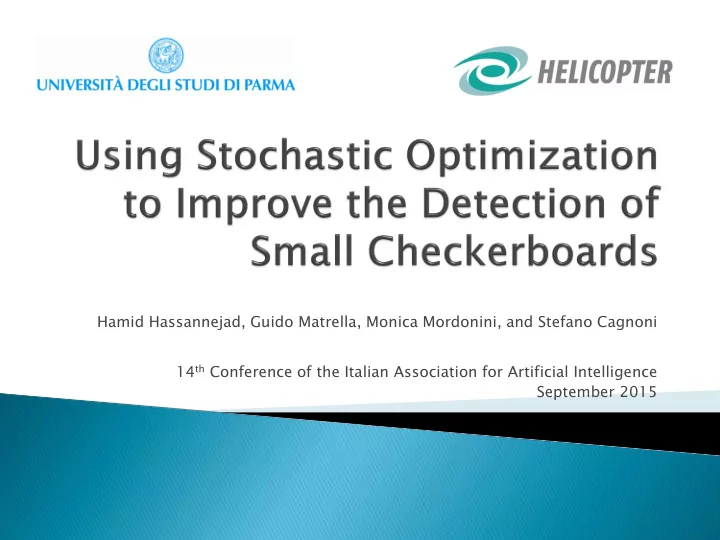

Hamid Hassannejad, Guido Matrella, Monica Mordonini, and Stefano Cagnoni 14 th Conference of the Italian Association for Artificial Intelligence September 2015
Diet monitoring is a big issue in many health- related topics, so there has been many attempts to make it automatic. In automatic diet monitoring, food amount estimation is a main objective. Volume estimation from images can be obtained through different procedures, but up to a scale factor which must be determined to compute the exact volume.
Simplicity of the pattern and availability of effective detection algorithms, makes a checkerboard a proper candidate as size reference. However, off-the-shelf checkerboard detection algorithms are usually designed to be means for camera calibration or pose- detection processes, which require that the checkerboards occupy most of the image.
Phase 1: Detect approximate location of the checkerboard. Phase 2: Detect the exact position of the corners using a corner-detection algorithm applied only to the region where the pattern was detected.
In this work, a stochastic approach is used to find the object pattern in the image. To find the pattern, if the relative position of the camera and the checkerboard was known, we could determine the corresponding point on the image by perspective projection.
The image region where the checkerboard was detected in the first phase can be cropped. A customized algorithm was designed to detect the checkerboard corners on the cropped image and refine the checkerboard position estimation.
The algorithm was tested on four image sets, including 458 food images in total. DE was iterated up to 1000 times for every image. Also, DE was allowed to run up to four times for each image if a satisfactory match had not been found. After locating the checkerboard, corners were located by two basic algorithms (OpenCV and Matlab) and by our customized algorithm.
Results of the DE-based checkerboard locating algorithm. In 98% of the cases the checkerboard was correctly located.
Detection rate Processing time
The pre-processing phase based on DE allows one to focus on the image region where the pattern is located. This improves the performance of corner detection algorithms and, at the same time, Reduces the execution time of such algorithms whose speed is usually inversely proportional to the difficulty of the task.
Tha hank nk y you! u!
Recommend
More recommend